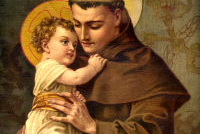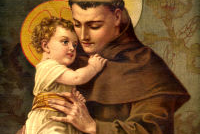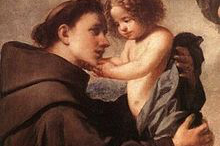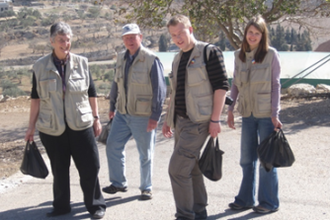St Anthony’s relics bring “a message of hope and love”
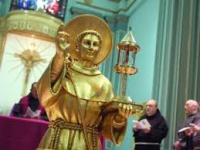
Spontaneous applause resounded around a packed Westminster Cathedral on Saturday evening after a Franciscan Friar accompanying relics of St Anthony of Padua on a tour of Ireland and the UK spoke about them bringing “a message of hope and love”. Before that, Fr Mario Conte’s refrain, based on St Anthony’s preaching, of ‘God loves you and God cares for you’ was repeated softly by the huge congregation. The editor of the International Edition of the Messenger of St Anthony magazine, who is based in Padua, was present the last time St Anthony’s tomb was opened in 1981 and described feeling a special connection ever since with the popular saint, whom he described as “truly a messenger of God”. In his view, “there is nothing superstitious about relics; the real meaning of a relic is love – they are a link of love between the person who venerates and the saint”.
Fr Mario’s explanation of what the relics mean came at the end of the evening Mass described as ‘beautiful and moving’ by those present. There was standing room only in the service celebrated by Archbishop Vincent Nichols. He described St Anthony as a great carer of the poor, who is often depicted with the child Jesus. “May we too hold Jesus in front of us” said Archbishop Nichols. For three hours before the Mass, thousands of people of all ages filed past and venerated the relics, after queuing outside the cathedral. They were overseen by an expert team of cathedral stewards who ensured that wheelchair users were whisked to the front, and that the line kept moving amidst the desire of many to linger at the relics.
The two relics – a small piece of petrified flesh and a layer of skin from the saint’s cheek – have been on a tour of Ireland and the UK. The event was to mark the 750th anniversary of the discovery of St Anthony’s incorrupt tongue in 1263, which was 32 years after his death in 1231. The relics have been brought from their Italian home at the Basilica of St Anthony in Padua. One of the relics was housed in a golden statue, while the other was in a smaller hand-held reliquary.
On the previous evening the relics were brought into Southwark Cathedral more than an hour before the All Saints Day Mass but already most seats had been taken. Shortly afterwards several appeals had to be made for a growing crowd to be patient and move back from the altar. The cathedral remained open late to allow visitors to venerate the relics and leave prayer requests to be placed at the saint's tomb in Padua’s basilica. Yesterday, the final venue of the tour was St Peter’s Italian Church in Clerkenwell, where veneration continued late into the evening.
Around 250,000 people have gathered at 17 venues to celebrate the relic tour since it began in Dublin on 17 October with a Mass celebrated by Archbishop Diarmuid Martin and the Papal Nuncio, Archbishop Charles Brown. There, Fr Conte said Anthony brought a message of hope to all those in Ireland who have been badly affected by the recession. "St Anthony was a person who knew the difficulties people had economically," he said. "In Padua in the 13th century there was a lot of desperation, and people were resorting to money lenders to survive.” He pointed out that "Anthony was on the side of the poor; he was tough; he battled and challenged those who took advantage of the little people, especially the old people and women".
During the eight-day visit to Ireland, large numbers included some 25,000 people visiting the relics in Cork, and 30,000 in Limerick. Reflecting on what he described as a “humbling affirmation of faith”, the Bishop of Limerick, Dr Brendan Leahy, said the turnout was way beyond what was expected. Huge crowds and queues around churches in UK followed in Glasgow, Aberdeen, Newcastle, Manchester, Liverpool, and Chester, before the tour moved to London on Friday.
Fr Conte, who is a Franciscan Greyfriar, said he had been delighted by the huge numbers of people who gathered to venerate the relics and who had felt Anthony to be a presence in their lives. He said: “Anthony was an extraordinary preacher. He was made a saint only 11 months after his death, the shortest time in the history of the church. Instead of people having to go to Padua to venerate the relics of St Anthony, he has come to them.” Around four million people visit St Anthony’s tomb at Padua every year. St Anthony is the patron of many things, including lost people or items; the elderly; and the oppressed and poor.
To listen to an interview with Fr Mario on Premier Radio, see: www.premier.org.uk/hearttoheart



